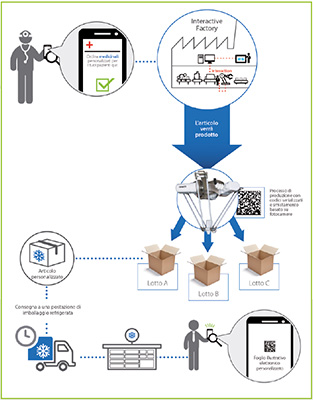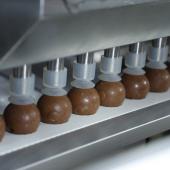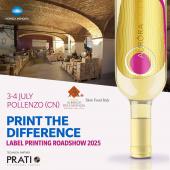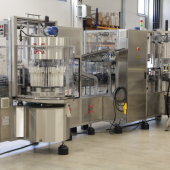From mass production to hyper customisation
Automation provides the flexibility that is needed to progressively reduce product batch numbers down to the smallest levels, and ultimately to a single unit - reaching the utopian goal of product personalisation. Dennis Verhoeven reviews how the demands of highly regulated market sectors, such as pharmaceuticals, medical devices - and increasingly, the food and beverage industry, define the pace of development.
Manufacturers and machine builders will look to automation for cost effective, flexible and secure ways to providing a transparent supply chain and solving traceability issues. This imposes a requirement to print human and/or machine-readable codes on the product’s packaging. Product personalisation - or produce-to-order manufacturing - is the idea of using serialised, code- based sorting by robots to customise a product range down to a batch number of a single item, specifically aimed at a particular customer. It depends crucially on the quick changeover capability that automation provides.

New approach to personalised medicines
• made-to-order of personalised (but anonymised) medicines
• automated identification of serialised 2D code
• automated inspection, sorting and tracking on item and aggregated (carton, shipment) levels
• patient application with personalised electronic leaflet.
Unique serialised code and the use of robots. For personalised products, a serialised code uniquely connected with the production order needs to be applied. This code determines what will happen at each stage of the production and supply chain. During the cartoning and/or palletising stages, the serialised codes can be used to pack products according to shipments. For serialised code inspection, quality inspection and vision-guided robotic pick-and-place systems can be integrated into a single vision system, providing significant savings of capital and maintenance costs, as well as in the operator training and documentation backup. Modules within automated machines can set themselves up rapidly and automatically (self- configuring), including the necessary automatic hardware definition, consistency checks and automatic initialisation. In this way, they have the flexibility required to adapt inspection to different sizes, containers and marketing programmes and eliminate human error. The demands of highly regulated market sectors, such as pharmaceuticals, medical devices - and increasingly, the food industry - are particularly well served by this approach: automated systems can also manage shape recognition, in-factory quality measurements prior to packaging, and check that the right pack and the right label are married with the product itself.

Simplifying identification. Following the lead of the pharmaceutical industry, which has many standards and guidelines that need to be followed, standards are steadily being adopted within the food and beverage industry for identifying items, locations, shipments, assets and associated information, as well as enabling data to be shared between the different parties in the supply chain.Today, serialisation codes are a defined process step which makes it possible to track and trace products from the beginning of a process through to the end. In the near future, serialisation codes will be used to make it possible to track and trace the products made for an individual consumer. Customisation is getting easier to achieve and manufacturers will use automation to know how and when to schedule their process to produce goods on time and deliver them to the right address.
Dennis Verhoeven
European Industrial Market Manager
Life Science Omron



















